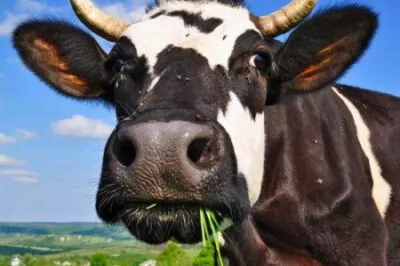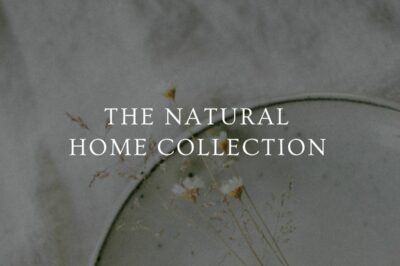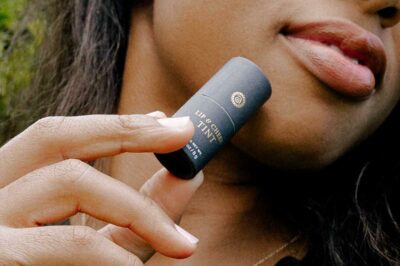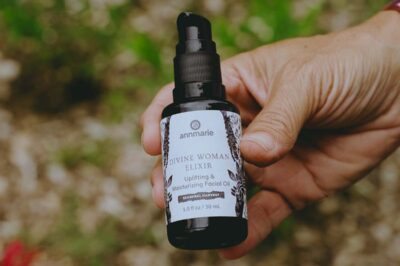Alright, conscious consumers! It’s time to weed through the thorny meadow of food labels to figure out what’s worthy of that skin-covered jumble of organs you've got there. There are impostors who dream of seeing you gobble down pesticide-ridden and unethical food while you smile in gleeful ignorance—it’s time to help you figure out just who they are.
We joke, of course. This article isn't about revealing lies in the food industry, nor is it about making you feel bad about anything you buy. Rather, we aim to create a handy guide for what exactly these labels mean and if they are regulated. Read up before your next trip to the grocery store so you can make confident choices about what to feed that temple of yours.
USDA Certified Organic:
This label tells you that farmers use only an allowable list of synthetic fertilizers, prohibited pesticides, GMOs, irradiation, or sewage sludge when growing their crops. As far as livestock, these bad boys have access to the outdoors, are not given antibiotics or growth hormones, and are fed with organic produce. If animal rights are your main concern, know that this food label guarantees that animals have access to the outdoors, but does not specify the quality of the land nor the actual amount of time they spend outdoors. A yearly inspection is required for companies to bear this label.
Cage Free:
This label pertains to chickens, and tells you that they were not raised in cages. Pretty straight forward. This is not highly regulated by the USDA or the Food Safety Inspection Service. This food label does not guarantee that the animals have any access to the outdoors.
Free Range:
This is a USDA regulated food label that covers poultry and meat, but not poultry raised for egg production. To use this label, animals must have access to outdoor space for half of their lives. Just keep in mind that having access to the outdoors does not mean the animals necessarily use the space. The USDA considers 5 minutes a day a sufficient amount of time for the animals to spend outdoors.
Fertile:
This label means that hens were raised in the presence of roosters. So perhaps some of their natural needs are being met.
Pasture Raised:
The USDA does not currently have standards associated with this oh-so-loved label. Producers who put this label on their food are suggesting their animals were raised outdoors, and thus were able to engage in some of their natural behaviors. Just remember that because this is not regulated, do your research! Most companies probably use this label because they love raising their livestock the right way. Some may just use this label to sell more product.
Grass-Fed:
This label is used for ruminant animal products (beef, primarily) that have been fed their natural diet of grass and hay. This should make them healthier, and therefore healthier to eat! These animals can be fed grass, but that does not mean they are necessarily moseying around a meadow all day. They could be fed grass, but kept in an enclosed space. Unless there is a “USDA Process Verified” label on the product, it has not been verified. Also keep in mind that just because they are grass-fed doesn't mean they are not finished on a grain based diet. Many cows are fed grass for some of their lives and then switched over to a feedlot for a grain based diet. So when really on the hunt for a grass-fed cow, look for grass-finished as well!
rBGH-Free or rBST-Free (Hormone-Free):
This label on dairy products tells you that the cows were not injected with rBGH or rBST hormones to increase their milk production. Organic meat should already fall under this category. The “hormone-free” label is not currently regulated by a third party regulatory agency, but you can investigate producers who have signed affidavits to declare they do not use these hormones. However, the USDA prohibits giving hormones to chickens, so the “hormone-free” doesn't mean much there — all the chicken you buy will be hormone-free whether it's labeled or not.
Certified Humane:
This label is a program of Humane Farm Animal Care, an independent, nonprofit organization. Unlike most other labels, this certification specifies how many animals can be kept in a given area. Their standards also require that the animals can do what they love to do. Most pursue an instrument or sport, but others choose hobbies such as archery or welding. (kidding) But actually, annual inspections ensure that these animals are well fed, experience limited stress and gentle handling, and are not treated with hormones or antibiotics. with this label, please keep in mind sick animals may be given antibiotics to heal illnesses.
Vegetarian Fed:
Just like what it sounds like—the animals were not fed any animal products. Keep in mind, feed that doesn't contain animal bi-products isn't necessarily organic or nutritionally superior. In fact, “vegetarian fed” can easily be just another way of saying a high grain-fed diet – where these animals are consuming copious amounts of genetically engineered crops (soy, corn, etc…). Also, vegetarian-fed chickens are not necessarily free-range, cage-free or organic. So, like many others labels, this is unregulated. Do your homework!
Shade Grown:
This is a label you may see on coffee. It means that the coffee trees were grown under the shade of other trees. Why do we care? Coffee is mainly grown in areas with high biodiversity, so when you clear large areas of land for farming, the loss to biodiversity is great. Shade-grown coffee maintains habitat for birds, and is thus often labeled “bird friendly”. There are a few different kinds of labels for shade-grown coffee. The Smithsonian Migratory Bird Center is one of the most, if not the most, reliable. This label specifies that coffee trees must be grown under 40% shade cover, with 10 different species. This ensures that the diversity of the forest remains higher, so these farms can support a myriad of bird species, making them more forest than farm.
Rainforest Alliance Certified:
Holy moly, are the standards for this certification extensive! The Sustainable Agriculture Network sets the standards for this label. Food producers must meet standards set in social and environmental management, ecosystem conservation, wildlife protection, water conservation, fair treatment and good working conditions for workers, occupational health and safety, good community relations, integrated crop management, soil management and conservation, and complete, integrated waste management. If all that isn't enough, they have annual inspections as well as surprise inspections.
100% Natural:
This means absolutely NOTHING for products other than meat and poultry. For meat and poultry, the USDA okays this label as long as there are no artificial ingredients or colors added and the food is minimally processed. Little tip to the wise — read the ingredients of 100% natural products thoroughly.
Dolphin-Safe:
This label is meant to ensure that dolphins are not killed through the process of catching tuna. During an entire fishing trip in pursuit of tuna, fisherman are prohibited from casing, netting, or encircling dolphins. They cannot use drift gill nets or accidentally kill dolphins. Dolphin-safe tuna cannot be mixed with dolphin-deadly tuna. The way this is regulated is to have an observer on-board the boat for the whole trip. I can't imagine how awkward is has got to be for that guy or gal!
Fair Trade:
When you buy something labeled “Fair Trade”, the farmers and workers were fairly compensated for the goods. TransFair USA sets a fair price for a given commodity, and also considers fair labor conditions, direct trade, community development and environmental sustainability. When you think about it, the retailer is often making the most money off a given commodity. This seems crazy when you think of all the work it takes to grow, say, coffee. Yet the farmers make a small profit comparatively. The fair trade concept aims to close this gap in profit.
Non-GMO Project Verified:
Last, but certainly not least is the Non-GMO Project Verification Mark. Yes, we love this trusty little mark that lets us know the food we eat has been verified as non GMO. The Non-GMO Project’s Product Verification Program (PVP) is a process-based and product-based program designed to assess compliance with their standards. They have quite a long and lengthy document outlining the program, but it's pretty insightful. You may want to take a few minutes and check it out here. The core requirements to meet their standards are having traceability, segregation, and testing of high-risk GMO ingredients at critical control points. The verification process is handled by independent, third-party technical administrators (TAs) who determine if a product complies with their standards. Non-GMO verified food is the fastest growing market in the natural food industry today.
As consumers, we have buying power. Think of how uncommon organic food was 50 years ago. Once shoppers started asking about organic produce, it became commonly stocked in grocery stores. Today, we have so many choices of what to buy.
Rather than get overwhelmed or lazy, we need to take it upon ourselves to be informed and choosy. Whatever your food ethics are — whether you like buying locally, avoiding animal products, or making sure the people who grew your food were treated fairly — doing your research and purchasing selectively can help shape the economy.
I hope this guide serves as a useful tool. It’s good to feel good about what you buy!
Do you have any certification or verification seals that you trust as your go-to guide? Tell us about them!
By Hope Freije
Sources:
http://www.usda.gov/wps/portal/usda/usdahome?contentidonly=true&contentid=organic-agriculture.html
http://fairtradeusa.org/certification/standards
http://sustainability.tufts.edu/decoding-food-labels/
http://www.thegreenguide.com/decoding-supermarket-beef-labels
http://www.redrover.org/commonly-used-food-labeling-terms
http://sanstandards.org/userfiles/SAN-S-1-1_2%20Sustainable%20Agriculture%20Standard_docx(1).pdf
http://homeguides.sfgate.com/difference-between-organic-freerange-chicken-79293.html
http://www.humanesociety.org/issues/confinement_farm/facts/guide_egg_labels.html








Leave a Reply